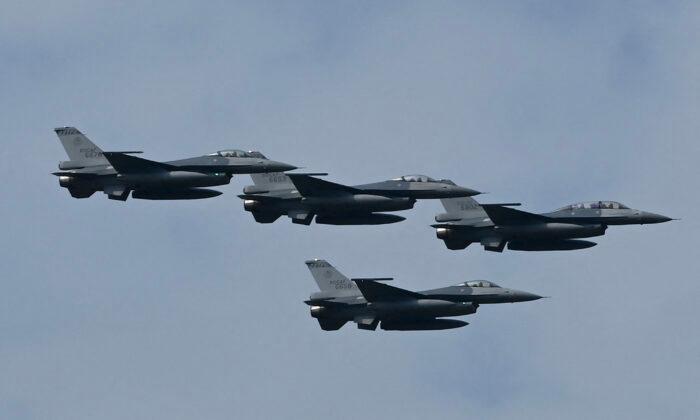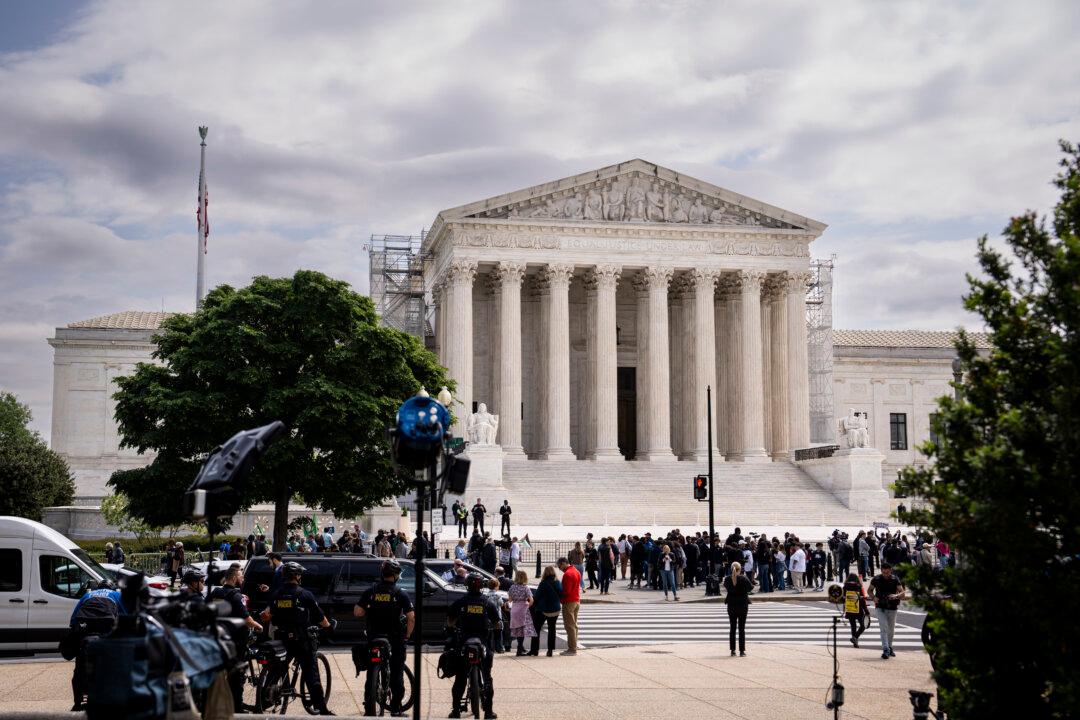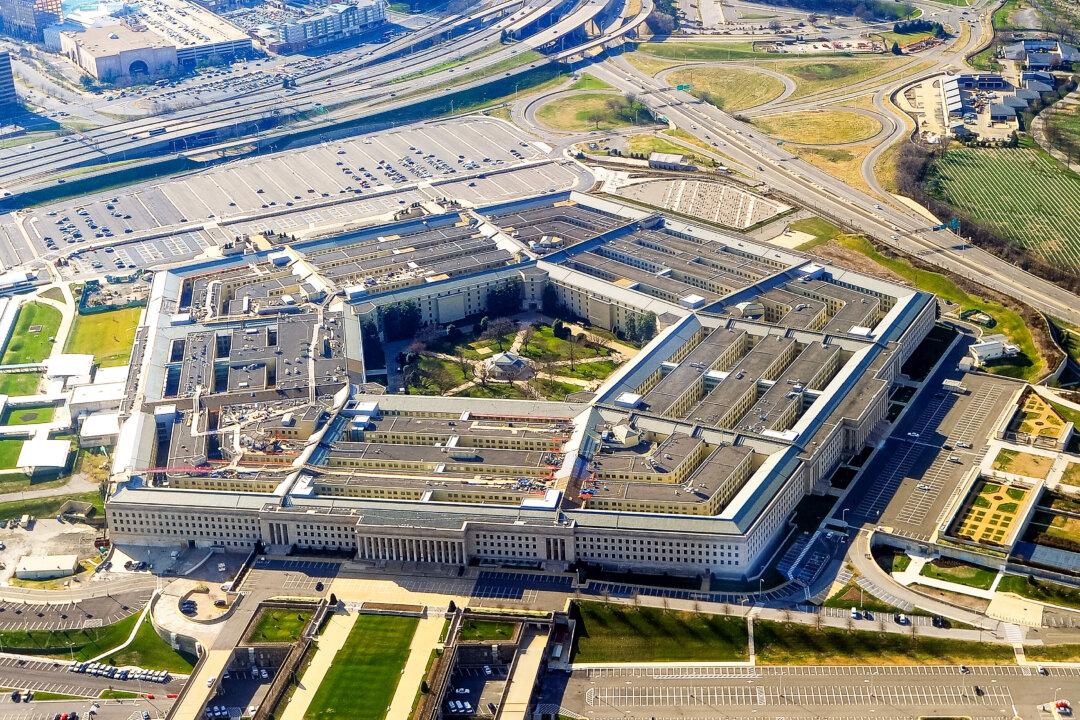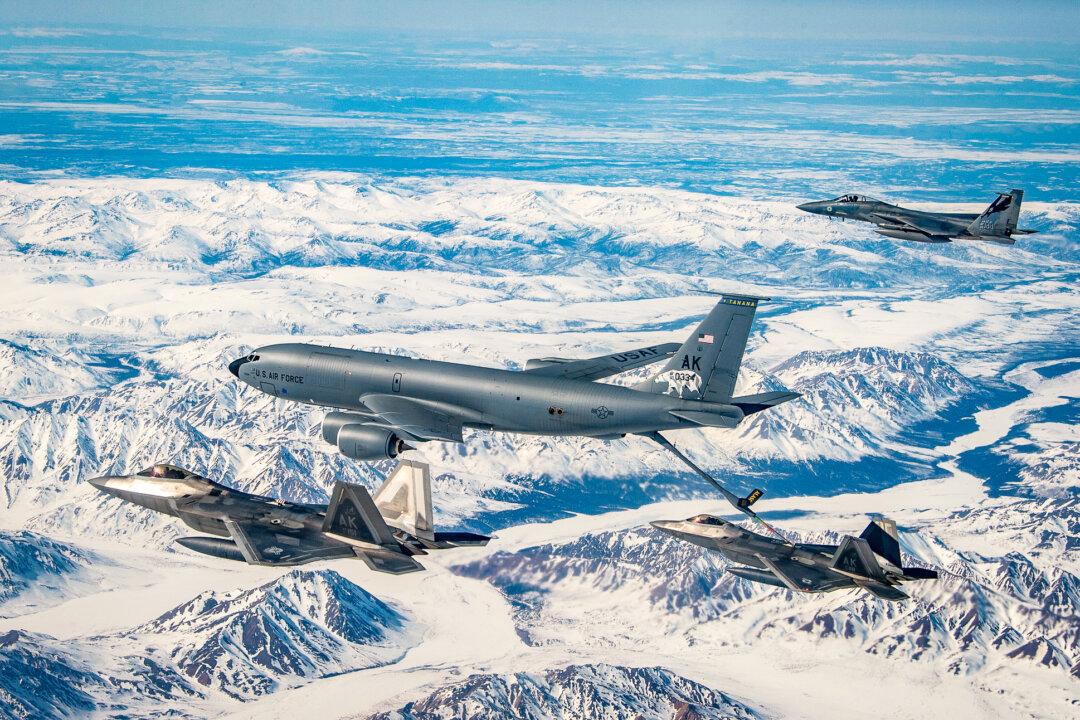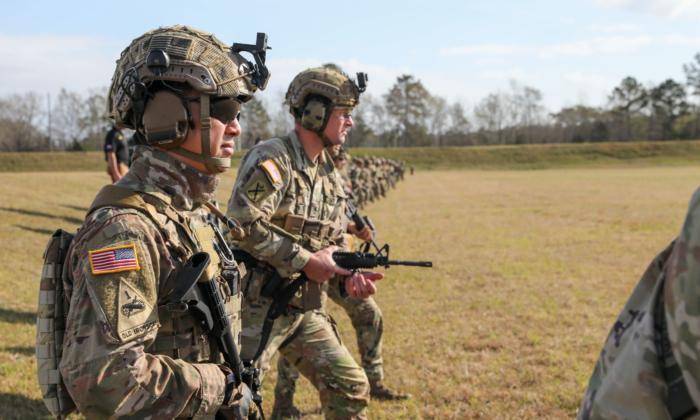The Chinese regime is rapidly expanding its military and modernizing its weaponry. Taiwan and the United States could be caught flat-footed if they fail to recognize the urgency of the threat, analysts warn.
China will have the ability to mount a full-scale invasion of Taiwan by 2025, according to Taiwanese Defense Minister Chiu Kuo-cheng. He also called the rising tensions between China and Taiwan the most severe he has seen in 40 years.
Retired Capt. James Fanell, former director of intelligence and information operations for the U.S. Navy’s Pacific Fleet, agreed. The United States needs to be prepared for a conflict as tension escalates to “near out-of-control levels” between China and Taiwan, he told The Epoch Times.
Fanell said the Chinese regime has become an “aggressor nation.” While some would argue they haven’t taken enough military action to be called an aggressor, he said, “the people that are supposed to be intelligent and forward-thinking about national security shouldn’t have to wait for China to launch an invasion of Taiwan to then be able to say China is an aggressor.”
This year, Chinese warplanes have entered Taiwan’s air defense zone in record numbers. In November, two Chinese amphibious landing dock ships also simulated an assault east of Taiwan.
Ill-Prepared for Conflict
According to the Lowy Institute’s Asia Power Index, China’s defense spending surpasses that of India, Japan, Taiwan, and all 10 members of the Association of South-East Asian Nations (ASEAN) combined.David Sauer, a retired senior CIA officer who served as chief of station and deputy chief of station in multiple overseas command positions in East Asia and South Asia, said it’s imperative to “read the writing on the wall and see looming danger [of the growing military power].”
If the Chinese regime were to move forward with an invasion of Taiwan, Sauer said, “they will want to do it as fast as possible, while limiting the amount of death and destruction.” He said he imagines “[the Chinese regime’s] goal would be to do it so fast that the U.S., Japan, and the international community can’t react fast enough to make any kind of difference.”
Time is running out for the United States and Taiwan to prepare to go to war with China, he said.
“Taiwan is going to have to be extremely resilient, hopefully holding on long enough for the United States to marshal enough forces to arrive and defend them with success,” Sauer said.
On Nov. 29, President Joe Biden approved recommendations from the Pentagon’s global posture review. While the review wasn’t made public, the Pentagon’s summary of its findings left much to be desired, according to Sauer.
“Little was said about China,” he said, explaining that the review lacked any specifics on strategic changes to U.S. capabilities or capacity for military operations in the Pacific. “The Pentagon appears to have missed an opportunity to recommend the deployment of more forces in the Pacific theater.”
“What does that say to the Chinese regime?” Sauer added. “The Chinese regime is massively increasing their military capabilities and the United States, under the direction of Biden and Austin, are not really doing anything different to match that buildup.”
For Fanell, the United States has been asleep at the wheel for decades.
“China has been conducting the largest military modernization in the post-WWII environment of any country in Asia,” Fanell said.
For at least 20 years, he said, experts have suggested China’s military buildup was normal, because China is a large country, having the second-largest economy in the world.
“This is what big countries do, they say—but it’s this kind of thinking that has made us ill-prepared,” Fanell said. “For the past few decades, U.S. operations have focused on the Middle East, and in doing so, the strategic threat of the PRC [People’s Republic of China] was largely minimized.”
“The last 30 years have been spent in the desert and mountains of Afghanistan, focused on killing individual terrorists.”
All the while, the Chinese navy has embarked on building the largest navy in the world with 355 ships. The Pentagon has projected that the People’s Liberation Army Navy (PLAN) will increase its number of ships to 460 by 2030. In comparison, a 30-year plan for the U.S. Navy to build ships would bring its fleet to 355 by 2049. At this rate, some analysts fear that the PLAN is outpacing the U.S. Navy in terms of naval capabilities.
A Crucial Decade Ahead
While the Chinese regime wants to avoid a full-blown military conflict in the immediate future, the time frame for such action is narrowing, according to Sauer. He noted Taiwan’s society is far removed from that of mainland China. “Given the unabashed efforts of China to take over Hong Kong, the chances for Taiwan to relinquish their autonomy peacefully are slim to none.”Fanell agreed, saying the Chinese regime does not necessarily want to go to full-blown war to achieve its goals. “But as time goes on [without Taiwan’s submission], the pressure to use military force increases exponentially,” he said, adding that Taiwan and the United States are running out of time because the Chinese Communist Party (CCP) is on a timeline.
According to Fanell, “whoever is the paramount leader at this time will be able to stand up in front of the world and say China has completed the great rejuvenation, having taken control of areas they believe are theirs.” These areas include Taiwan and the disputed border regions of India, he noted.
For the CCP, they are likely focusing on one key question: “How late can [the Chinese regime] wait to use military force and still expect the world to come to Beijing on 1 October 2049 and celebrate the great rejuvenation?”
Following the massacre at Tiananmen Square, the world condemned “the barbarous actions of the PRC and CCP in 1989,” he said. “Fast-forward 19 years and President Bush sat, with sleeves rolled up, among commoners in a stadium to enjoy the spectacular opening ceremony of the 2008 Beijing Olympics.”
If 20 years is the proposed mark for the world to forget about the atrocities of Tiananmen Square, then “back up 20 years from 2049,” Fanell. Thus, the time period between now and 2030, he characterizes as “the decade of great concern”—“the most dangerous time in the world” for Taiwan and its allies.
If the Chinese were to take “aggressive” military action between 2025 and 2030, for example, he said, “the Chinese also recognize that the West has a short attention span, and will forget about their use of force, just like they forgot about Tiananmen Square.”
“Many of the same people who will oppose the invasion of Taiwan will also forget about the invasion, and find themselves attending the big [rejuvenation] ceremony in 2049,” Fanell said.
